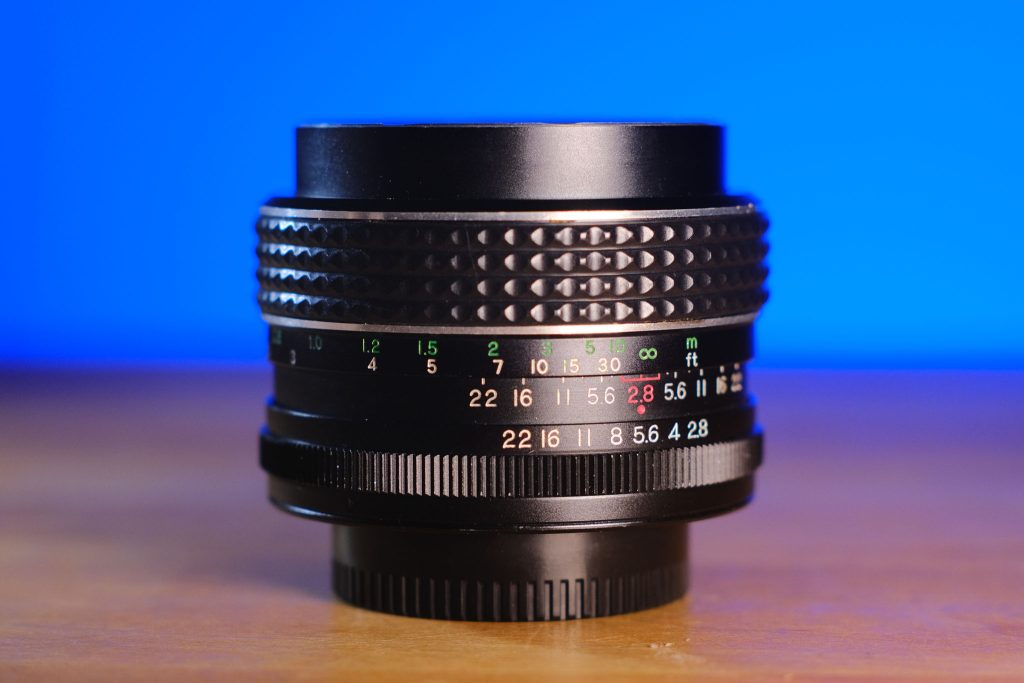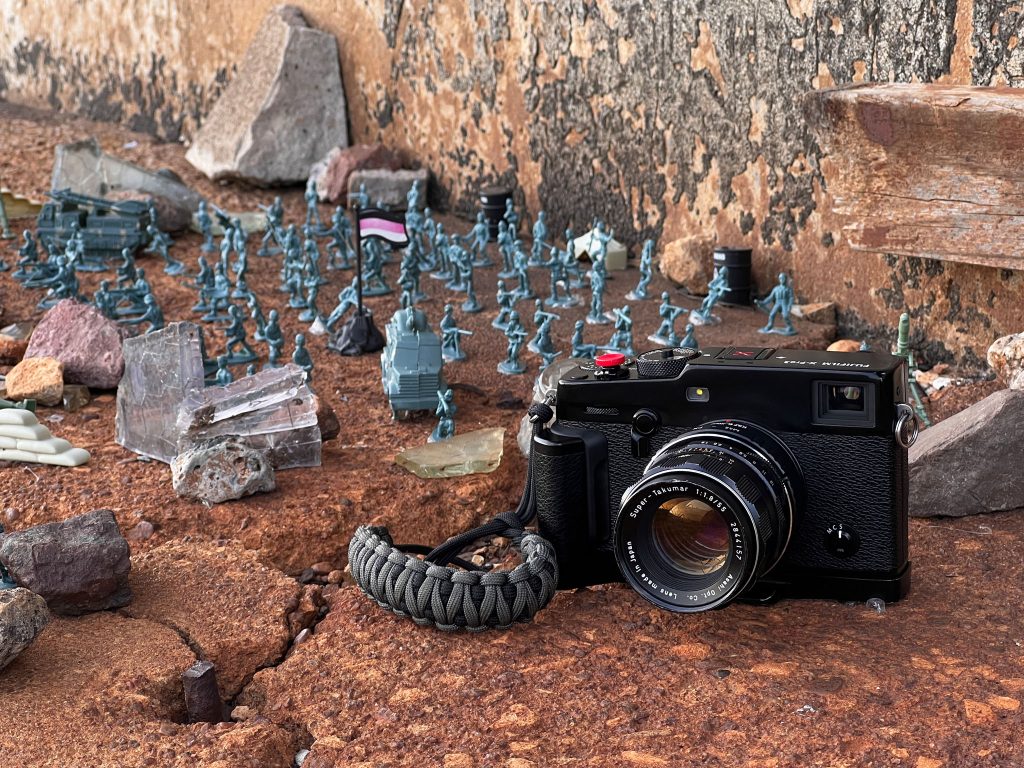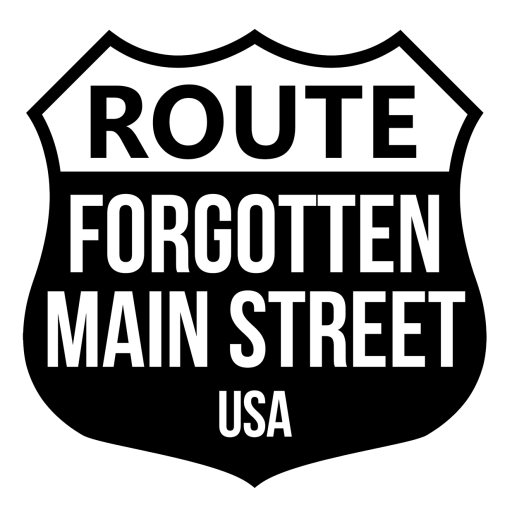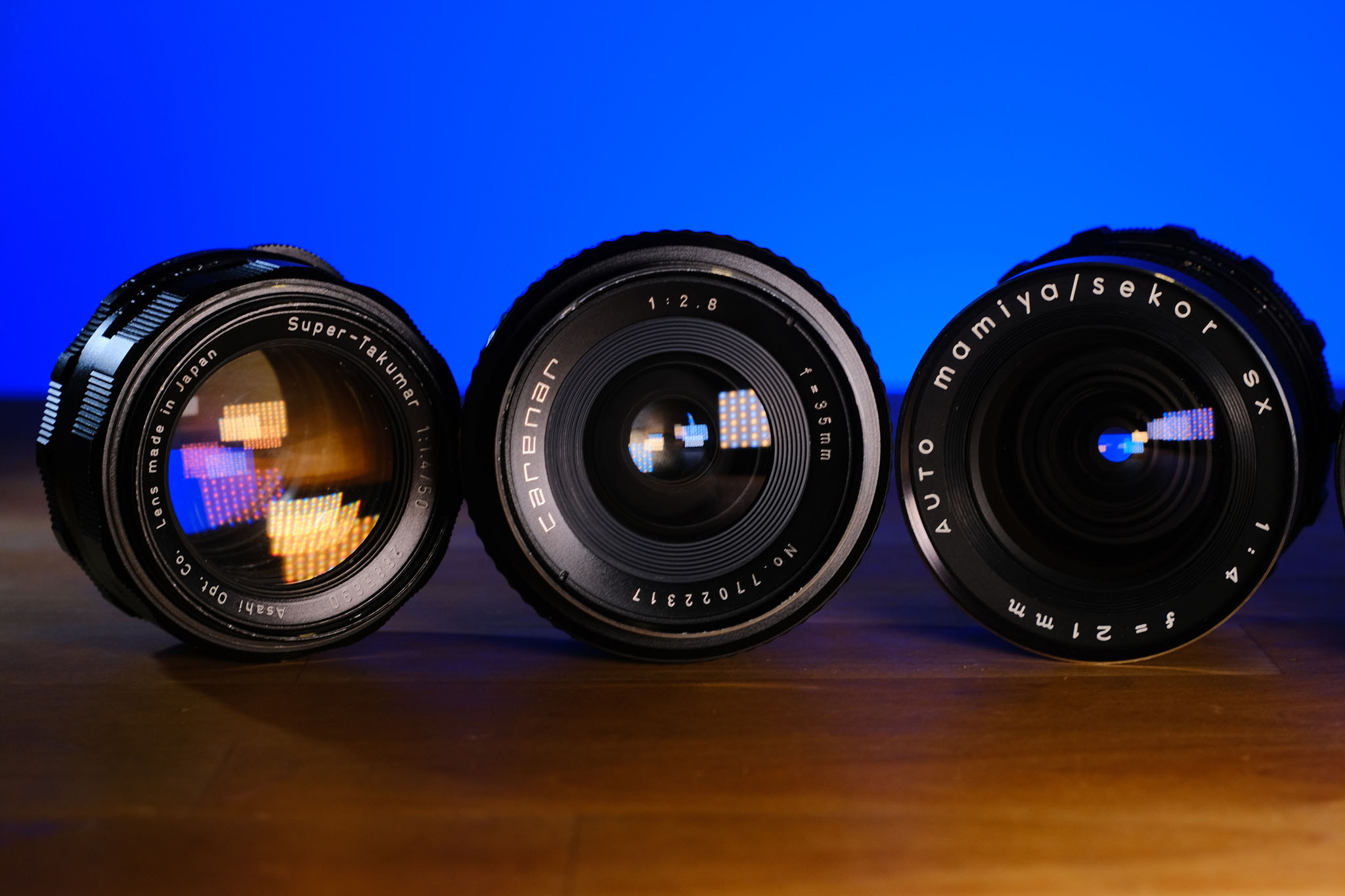In this wondrous age of digital technology advancements, there are a few passionate photographers exploring the craft through the use of older manual focus lenses. While we are late adopters of this practice, the character of these older lenses can’t be denied and creates a unique capture in camera. Pair these optics with the fabulous film situations of the Fujifilm cameras and this combination is probably the closest experience of shooting film without actually shooting film.

During our inaugural trip, we devised a simple system to divide lenses into groups based on manufacturing dates. These periods are some way random, but we feel it’s a good separator wen discussing different lens types.
MODERN – These lenses are the normal ones that the majority of photographers use today. Basically any lens made in the year 2000 and newer. The quality of even the least expensive lenses are computer designed, multi-coated and provide autofocus functions along with EXIF data imbedded into digital capture files.
RETRO – We are talking about lenses made between 1980 and before modern lenses. These were probably designed with computer-aided software, have great glass coatings and many are autofocus capable with electronic contacts. Retro lenses are a great choice for videographers looking for a solid build, manual focus lens that can be relatively inexpensive.

VINTAGE – This is the sweet spot for us, with lenses made between 1950 up to 1980. Lenses in this arena are solidly built, mostly metal and may have some single coating on glass and manual focus. This really was the golden age of photography with companies using proven designs and developing different types of glass elements to improve capture quality. The uniqueness of many models create different characteristics in the capture, creating styles that would be difficult to replicate in post processing. This alone makes lenses in this group highly sought tools in the creative process, specially when paired with painterly bokeh, distinct flare profile and color tone.
ANTIQUE – There are some great usable glass in tis category of lenses made before 1950. The majority of these lenses would be for rangefinders, view cameras with bellows and twin lens reflex cameras. Some of the simple element designs will provide images with very special traits.
Some of our favorite brands in brands are Pentax Takumar, Carl Zeiss, Meyer Optik Gorlitz and the Russian made Helios. Don’t discount other lenses with different image capture profiles like Fujinon, Hoya, Yashica, Mamiya Seikor, etc. Regardless of the lens you are looking to buy, we highly recommend narrowing the search for the very standard M42 Screw Mount that is widely available.
The M42 Screw mount, developed in 1938, was the standard lens mount well through the late 1970s and there is a large selection of adapters for using these lenses on modern camera, specially in the mirrorless genre.

Finding vintage lenses in the wild for purchase, isn’t hard but sometimes hunting that elusive Carl Zeiss Jena Biotar 75mm f1.5 or Pentax Auto Takumar 55mm f2.2 in the Zebra configuration, online searching on eBay can be the easiest option. Don’t forgot to try a few garage sales or maybe your local Facebook Marketplace for some hidden gems.
For your first lens venture into this arena, we would suggest a Pentax Super Takumar 50mm f1.4 or Super Takumar 55mm f1.8. Either one should range from $40 – $85 in good working condition. Don’t discount the excellent Super Takumar 28mm f3.5 if you would like something a little wider.
Camerapedia has an excellent list of available M42 mount lenses, grouped by maker on their website as well as great history information on some of the more sought after glass.
Be sure to check out our guide to adapters and find your perfect match to use these great and underrated lenses.


